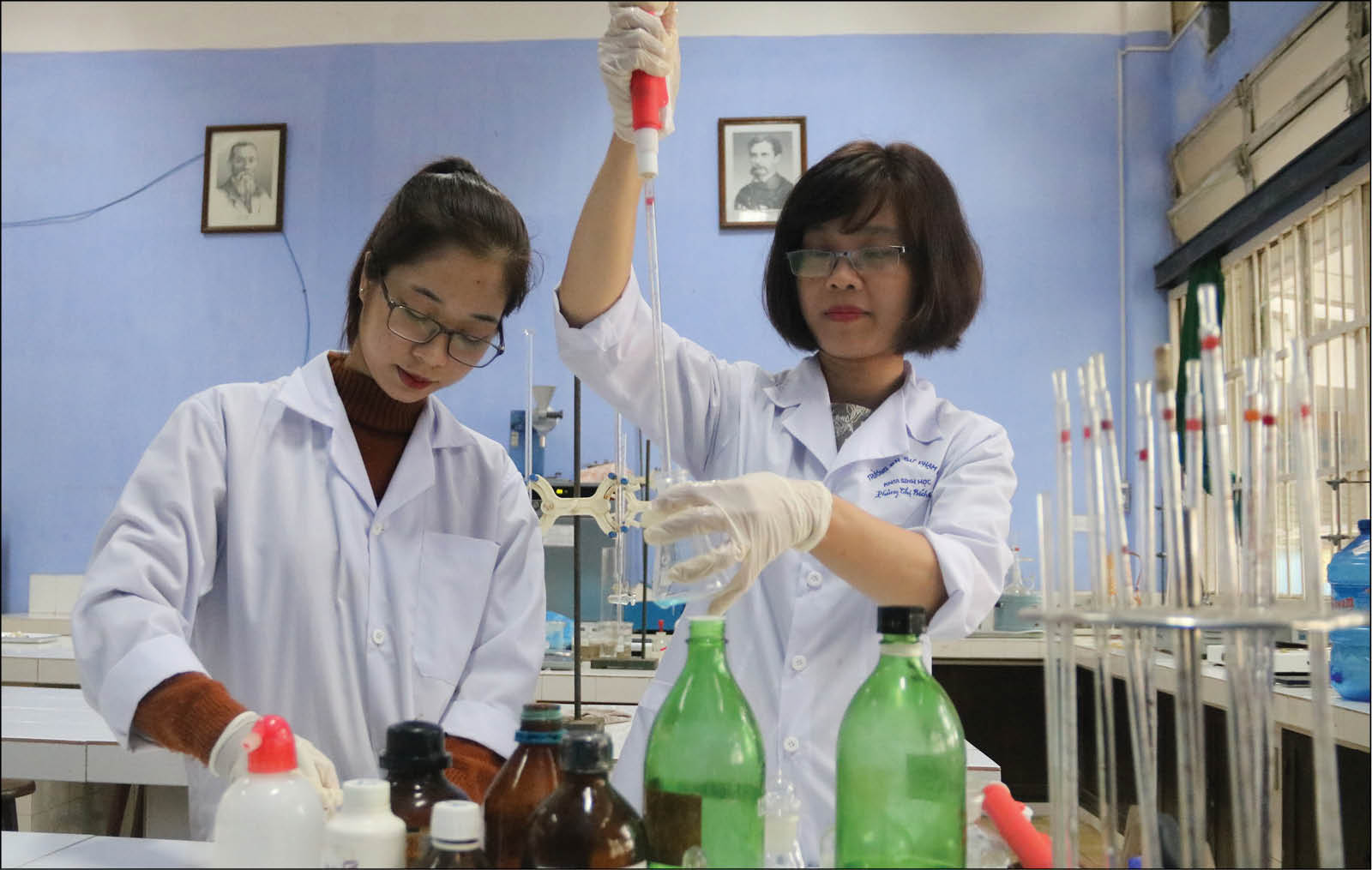
Ly Son garlic grown in Hue
A hard-working research
Ms. Phung Thi Bich Hoa, M.S., head of the project on "Study on the ability to grow and develop, and the physiological and biochemical indicators of Ly Son garlic grown in Thua Thien Hue," said that in order to implement this project, the group had to spend more than one year and carried out many stages, which demanded enthusiasm and efforts.
Ly Son garlic is a garlic type with high medicinal ingredients, and being favored by consumers in the market; at the same time, it brings high economic benefits to the farmers. Unfortunately, there has been almost no research and experimentation on growing this type of garlic in Hue.
Embarking on the research, lecturers and students of the Department of Biology, University of Education - Hue University had to buy a large amount of garlic seed right at its "capital". They had to choose the garlic seed elaborately. The garlic seed used to multiply well must be solid, and not carry pests. With an amount of more than 10 kilos of garlic seed, the selection could not be done without care.
“However, that is not a big problem. The hardest thing for us is the process of preparing the soil. Although the farmers in two communes of Vinh Thanh (Phu Vang) and Quang Thai (Quang Dien) supported us with farmland, we must add an additional amount of alluvial soil apart from the sandy soil. The process of cultivated land preparation is very hard; we must scratch the sand layer on the surface into piles, scrape the sand layer close to the basalt soil layer, then add a 1-2cm layer of basalt red soil, and compact them. Importantly, this soil layer must be taken from the adjacent areas with alluvial soil. Next, we fertilized it, and spread the old sand layer all over”, Ms. Phung Thi Bich Hoa said.
A special fact is that the research team is all female (including two lecturers, and two students). As the funding is limited (15 million VND), they must “cut their coat according to their cloth”.

Ms. Phung Thi Bich Hoa, M.S. (right) and her student study physiological and biochemical indicators of the garlic
Many prospects
In the end of 2018, this research work was successfully accepted. In addition to the sandy soil of Vinh Thanh, which is compatible with the soil conditions of Ly Son, in Quang Thai sandy soil, the quality and productivity of garlic is equivalent to those of the garlic grown in Quang Ngai.
"The germination rate of the garlic is nearly 100%, the number of leaves/plants of the garlic or its stem length, the fresh and dry weight of the garlic is quite similar to Ly Son garlic. In particular, the basic biochemical content of the garlic extract is quite high, typically in Vinh Thanh, the garlic’s protein content accounts for 5.15 grams per 100 grams. The contents of essential oils, vitamin C, and sulfide compounds are very good,” Phung Thi Bich Hoa M.S., said.
The success of this research opens up many expectations and orientations for the transformation of crop structure of farmers. According to the research team representative, traditional crops gradually reduce their productivity due to climate change.
Meanwhile, Ly Son garlic has good market, and high price; farmers can grow it to replace crops, transform crop structure into one per season. According to the calculations of research’s authors, besides Vinh Thanh and Quang Thai, there are many coastal communes in Thua Thien Hue that can experiment with growing this type of garlic, contributing to supporting farmers do business in a new direction.
The research team is continuing to study on fermenting Ly Son garlic into black garlic, so as to better preserve the garlic and bring about higher selling price.
One more expectation is to create a career path for students. The initial study results of the experimentation on growing this garlic type promote further studies on it.
Story and photos: Huu Phuc